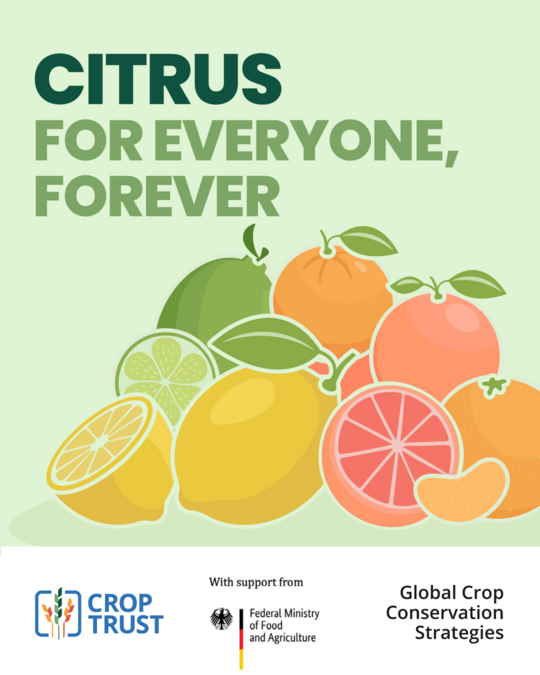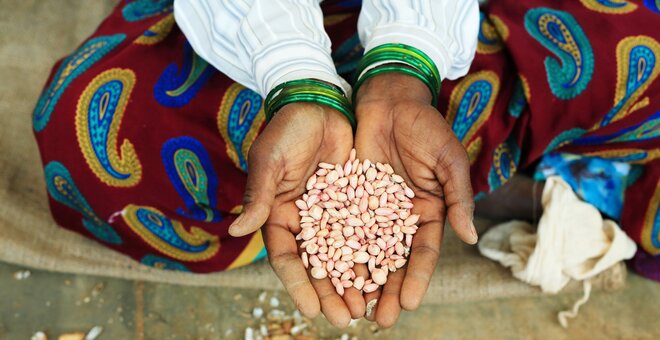The Crop Trust, along with its strategic partners, is developing conservation strategies to protect the genetic diversity of the world’s food crops. This initiative is funded by the German Federal Ministry of Food and Agriculture (BMEL).
- To gain an overview on the current state of the conservation and use of citrus genetic resources, the Crop Trust commissioned A global strategy for the conservation and use of citrus genetic resources. This strategy supports the efficiency and effectiveness of citrus diversity conservation at national, regional and international levels, and identifies priorities for strengthening the conservation and use of citrus genetic resources.
- Goal for global ex situ conservation of citrus: The diversity of citrus and its wild relatives is conserved and available in a disease and pathogen-free state in perpetuity in a secure, distributed network of genebank collections that provide collection data (passport, phenotypic, genotypic) in a standardized common information system.
- Conservation of citrus trees and their crop wild relatives is critical. This diversity is necessary for use in breeding programs that seek to improve overall plant performance against biotic and abiotic challenges, as well as to improve product quality to benefit the well-being and health of consumers.
Did you know?
- Citrus, including oranges, lemons, limes, pummelos, grapefruits and mandarins as well as other fruits, are among the most widely grown fruit crops globally.
- Citrus is sold and consumed fresh and processed into juice, juice concentrate, oils, and other products.
- Citrus crop wild relatives have local economic importance.
- Citrus fruit are healthy; they are rich in vitamins, secondary metabolites, antioxidants, and other bioactive compounds. Sugar to acid ratios in the fruit, as well as some recently identified aromatic compounds, determine the degree to which fruit and juice taste sour or sweet.
Priority Actions
- Increase citrus genebank community cooperation by establishing an international working group and developing/using a Citrus Community Information System (CCIS) for citrus and related genera.
- Support data collection and documentation efforts for citrus collections.
- Identify taxonomic gaps (cultivars and related genera) in citrus collections and fill gaps through collections and exchange.
- Increase citrus collection health and security (backup), particularly collections that have vulnerable unique plant genetic resources.
- Provide training opportunities for the citrus genebanking community on a wide range of topics—through a combination of affordable in-person and online options.
- Develop, maintain, and distribute materials from a clean, secure international citrus collection at one or more locations that captures taxonomic and genetic diversity of citrus.
Related stories about conservation strategies
Opinion
Breathing New Life into the Global Crop Conservation Strategies
The Crop Trust kicks off a new project funded by the German government.
18 Dec 2019


